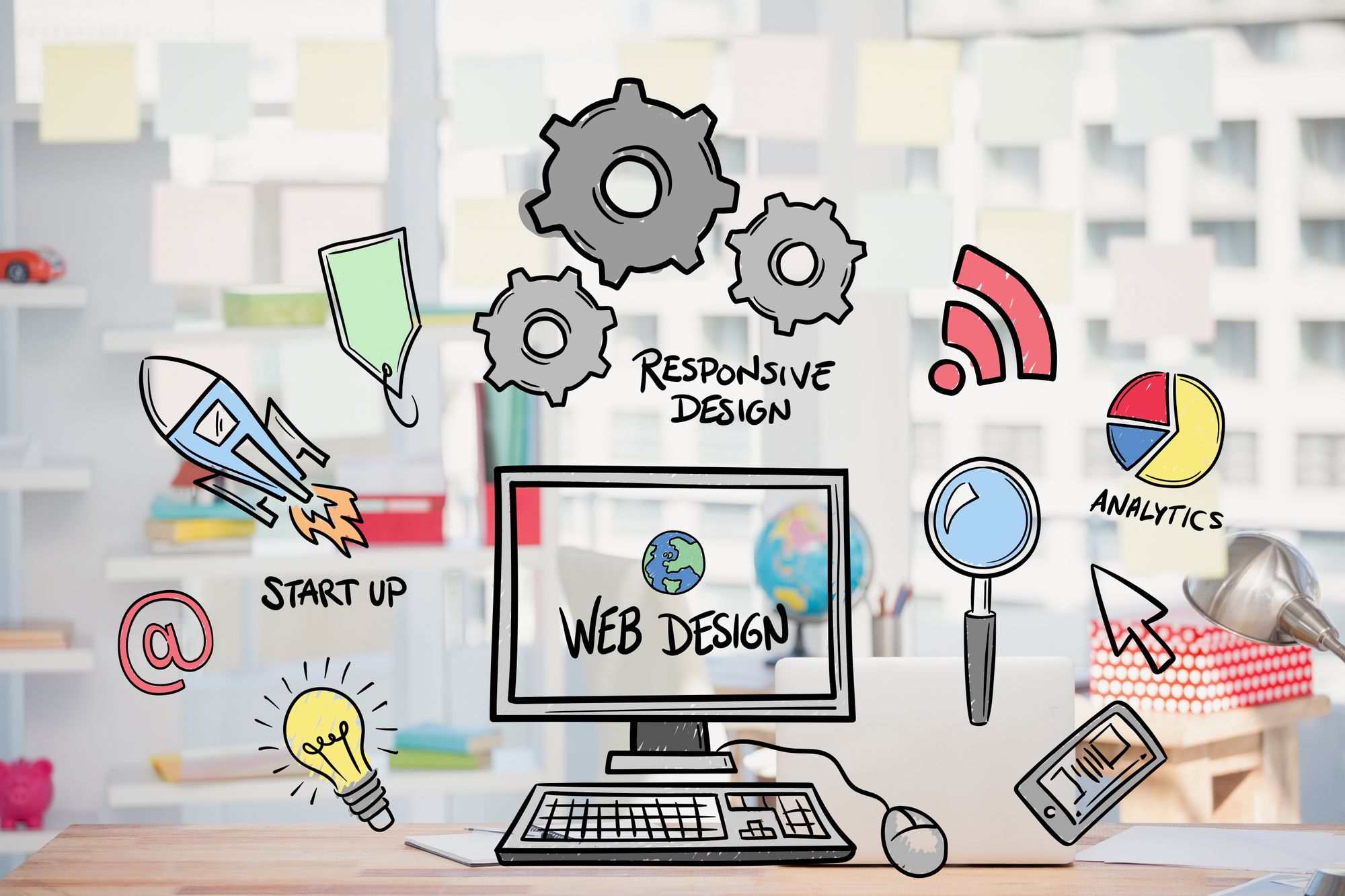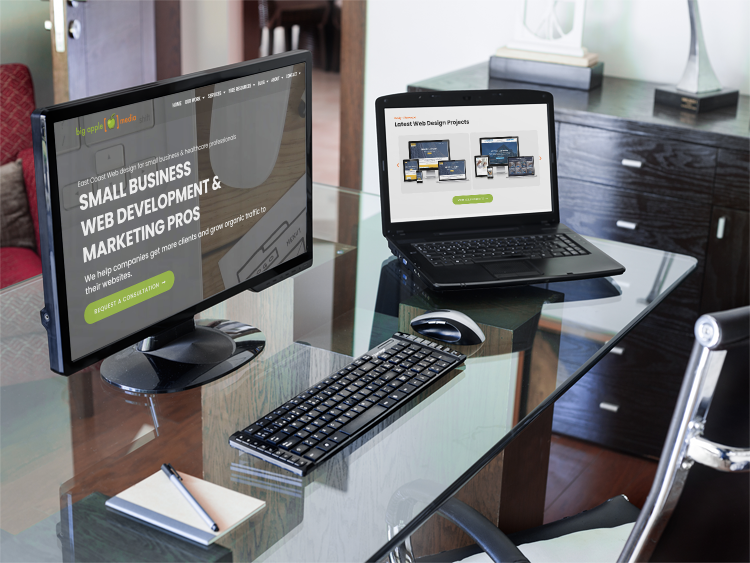Why Holistic Web Design Is the Trick to a Smooth User Experience
In today's digital landscape, the importance of holistic internet style can not be overstated, as it delicately weaves together aesthetic appeals, usability, and functionality to develop a seamless customer experience. By embracing an extensive approach that focuses on user demands and leverages comments, designers can boost the overall communication with their platforms.
Understanding Alternative Website Design
Holistic internet design incorporates a detailed approach that thinks about every aspect of the individual experience. This methodology incorporates various aspects, including looks, functionality, web content, and usability, to produce a smooth interaction in between the user and the digital system. By prioritizing the individual's trip, holistic style looks for to align the web site's framework and material with the requirements and assumptions of its target market.

In addition, the assimilation of responsive design principles is essential in accommodating numerous gadgets and display dimensions, even more enhancing the customer experience. By recognizing the interconnectedness of these elements, designers can develop internet sites that not only attract yet likewise keep customers, inevitably driving interaction and conversions. Holistic internet style is, therefore, a critical technique that fosters a purposeful connection in between individuals and digital areas, paving the means for sustainable on-line success.

Crucial Element of Holistic Layout
An effective alternative layout approach integrates numerous crucial elements that function in consistency to enhance individual experience. One such component is user-centered design, which highlights understanding customers' needs, preferences, and habits. web design consulting services. By performing comprehensive study and use testing, designers can develop tailored services that resonate with the target market
An additional critical element is consistency in aesthetic and practical facets throughout the website. This involves preserving a cohesive color combination, typography, and design, which aids customers browse the website intuitively. Additionally, responsive design is vital, making sure that the internet site performs ideally throughout various devices and screen sizes.

Accessibility is also a vital component of holistic design. By sticking to access criteria, developers can develop comprehensive experiences that deal with diverse user groups, including those with handicaps. Furthermore, the assimilation of web content method guarantees that important information is presented plainly and succinctly, boosting comprehension and engagement.

Advantages of a Seamless Experience
Producing a smooth user experience provides countless benefits that considerably boost overall complete satisfaction and involvement. At its core, a seamless experience fosters a sense of convenience and intuition, allowing users to navigate an internet site or application easily. This reduction in friction not only boosts the chance of users returning however additionally enhances their determination to suggest the system to others.
In addition, a smooth experience leads to improved conversion rates. When users find what they need with minimal effort, they are much more inclined to complete desired actions, such as buying or enrolling in a newsletter. This efficiency translates into higher customer retention, as satisfied users are more likely to become loyal supporters for the brand name.
In addition, a natural and smooth interface lessens cognitive tons, enabling individuals to concentrate on content as opposed Your Domain Name to struggling with navigating or layout incongruities (web design consulting services). This clearness not only enhances customer fulfillment yet also reinforces brand trustworthiness. Inevitably, prioritizing a smooth user experience causes an affordable benefit, as companies that spend in this aspect are much better placed to satisfy the evolving assumptions of their target market and drive long-term success
Implementing Holistic Strategies
To attain a really seamless individual experience, organizations find out have to embrace holistic approaches that think about every aspect of style and functionality. This strategy begins with a linked vision that lines up group members throughout different techniques, including UX/UI layout, content growth, and technical execution. Effective partnership fosters a common understanding of customer requirements and purposes, allowing for even more coherent design selections.
Next, it is important to create individual characters and journey maps that show the varied demographics and behaviors of the target audience. By understanding with users' point of views, companies can anticipate difficulties and simplify interactions throughout the digital experience.
In addition, consistent branding and messaging must penetrate every touchpoint, ensuring an identifiable and credible visibility that improves customer involvement. Integrating responsive style concepts is additionally important, as individuals currently interact with content throughout numerous devices.
Additionally, companies need to prioritize ease of access, making sure that all customers, no matter of ability, can navigate and gain from their digital offerings. By installing these alternative approaches right into the design procedure, companies can develop a natural and enjoyable user experience that advertises complete satisfaction and loyalty.
Measuring User Experience Success
While achieving a holistic approach to website design is important, determining user experience success is equally important to ensure that layout approaches properly satisfy individual needs. This requires a mix of qualitative and measurable metrics to get a detailed understanding of individual interactions and contentment degrees.
Secret performance indications (KPIs) such as customer interaction, conversion rates, and bounce prices supply important quantitative understandings. As an example, a high conversion rate might suggest that users find the style user-friendly and engaging. On the other hand, elevated bounce prices can indicate that customers are discontented or confused, demanding a reevaluation of the style elements.
Qualitative procedures, including customer feedback, studies, and functionality screening, are vital for gaining much deeper insights right into the user experience. Examining user remarks can reveal discomfort factors and areas for renovation, while usability examinations allow developers to observe real-time communications and determine barriers individuals encounter.
Eventually, the assimilation of these measurement strategies enables continual improvement of web design, guaranteeing it stays user-centered and efficient in supplying a seamless experience. Routinely revisiting these metrics will certainly make it possible for designers to adapt to advancing user requirements and choices, strengthening the overall success of an alternative website design strategy.
Conclusion
Finally, holistic web design arises as a basic strategy to attaining a smooth individual experience. By integrating aesthetic appeals, performance, and functionality, this design philosophy addresses diverse customer demands and preferences. The concentrate on user-centered strategies not just boosts navigation and complete satisfaction but also fosters brand name integrity and availability. Eventually, the click for source implementation of all natural layout concepts substantially contributes to improved conversion prices and client retention, establishing a durable structure for efficient digital interactions.